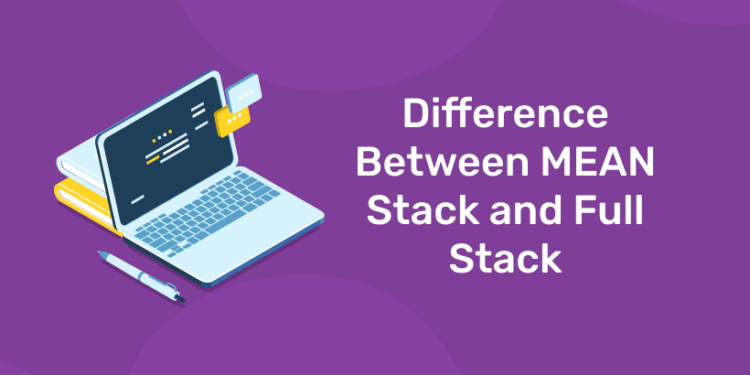Table of Contents
Why choose Full Stack?
Full Stack Developers work on both frontend and backend technologies to build interactive web applications, mobile applications, databases, testing, and many more. Earlier developers who are proficient in the above domains used to carry on with the same designation. As technology trends are changing day by day, there is a huge demand for Full Stack Developers and now they can easily switch between the frontend and backend development of a project. Hence, the ‘Full Stack Developer’ profile is a prominent one as a result of the ample benefits it delivers.
There are some major responsibilities Full Stack Developers have to perform in companies around the world. Let’s check them out.
- Full Stack Developers build a complete web application from scratch without any gap in the development process.
- They should have a good idea of the entire design structure and handle any level of the development process according to the requirements.
- For them, it is easy to progress with advanced tools and technologies faster than others.
- Full Stack Developers focus on problems and solutions and are capable of fixing them easily.
Start your coding career here
Why MEAN Stack?
1: Which of the following is a JavaScript framework/library?
MEAN Stack is a collection of JavaScript-based technologies that help in building complex websites and responsive mobile apps. In other words, it can be defined as a full-fledged JavaScript framework. As mentioned, MEAN Stack is a combination of open-source frameworks such as MongoDB, ExpressJS, AngularJS, and NodeJS, which helps design mobile apps and websites with ease.
MEAN Stack is the latest trending stack development framework that consists of multiple tools and plugins that assist developers across the world to concentrate on the complex parts of the project development process. Let’s discuss the four full-fledged JavaScript frameworks that comprise MEAN Stack.
- MongoDB: MongoDB is a NoSQL database that is used to store a high volume of data. It makes use of documents and collections. Where documents involve the key-value pair data in MongoDB, collections are a set of functions and documents similar to relational database tables.
- ExpressJS: Express is a standard server framework for Node.js applications that help build multi-page, hybrid-page, and single-page web applications.
- AngularJS: Angular.js is a Model-View-Control framework similar to the JavaScript framework that is used to design dynamic web applications and business applications easily.
- NodeJS: Node.js is a cross-platform and open-source framework used to develop networking and server-side applications. It provides a rich set of libraries of different JavaScript models to develop applications at ease.
Here are some of the benefits of MEAN Stack Development.
- It wraps a complete web development cycle, from front-end development to backend development, by using a set of JavaScript libraries.
- To control the web development process smoothly, it supports the Model-View-Control (MVC) architecture.
- It comes up with a built-in comprehensive suite of testing tools.
- It helps clear unnecessary bugs in the development process and keeps the application well-organized.
I hope you are now familiar with MEAN stack developer vs Full-stack developer. Now, let’s get into our topic of discussion, ‘Full Stack vs MEAN Stack.’
Difference between MEAN stack developer and Full stack developer / full stack vs mean stack
| S.NO. | MEAN STACK DEVELOPER | FULL STACK DEVELOPER |
| 01. | An IT professional who works on a collection of JavaScript technologies to develop web applications is called a MEAN stack developer where MEAN refers to MongoDB, Expressjs, AngularJs, NodeJS. | An IT professional who works on the development of both server-side and client-side software, is called a full stack developer who requires knowledge on a set of technologies. |
| 02. | MEAN stack development is a set of four full-stack technologies that can be used to make a full-stack application. It is an integral part of full-stack development. | A full-stack developer knows all the web development frameworks, technologies, programming languages required to develop a fully functional website. |
| 03. | In this, developers are widely facilitated to use the Angular front-end framework. | In this, developers can use any front-end technologies from a lot of front-end development frameworks. |
| 04. | In this, developers are enabled node.js to write server-side code in JavaScript. | But in this, developers are enabled to take benefits of robust server-side programming language. |
| 05. | There is only one database i.e Mongo DB. | In this, developers are work with a lot of databases like MySQL, SQL Server, Oracle, etc. |
| 06. | In these development enterprises, it simulates full-stack development by writing both sides of programming code in JavaScript. | In these development enterprises, we can get the front-end and the back-end at the same time. |
| 07. | MEAN stack generally refers to a full-stack development framework. | Full-stack generally refers to a full-stack development process based on the mentioned technologies. |
🚀 Start Coding Today! Enroll Now with Easy EMI Options. 💳✨
Get Hired as a Full-Stack Developer: Master the Skills Employers Are Looking For!
Start Learning With EMI Payment OptionsFull-Stack vs MEAN Stack Salary
The average salary paid to MEAN Stack Developers in India is around ₹900,000 per year, and in the United States, it is around US$120,000 per year.
The average income of Full Stack Developers in India is around ₹695,737 per year, and in the United States, it is around US$105,813 per year.
Grab latest study materials! Download the app now
MEAN Stack Developer :
An IT professional who works on a collection of JavaScript technologies to develop web applications is called a MEAN stack developer.
MEAN refers to
- M for MongoDB (NoSQL database)
- E for Express (a backend web application framework for Node.js)
- A for Angular (JavaScript based open-source frontend web framework to develop single page applications front end framework)
- N for Node.js (an open source, cross-platform run-time environment for developing server-side and network applications)
Pros of Mean Stack Development:
- It helps in developing websites/apps faster and simpler.
- This uses only one uniform language which is used for stack development.
- It helps in developing applications on a rapid base.
- It uses very low memory as overhead.
- It organizes the whole application.
- It helps to avoid every unnecessary groundwork.
- Its Mongo DataBase is used for cloud storage.
Cons of Mean Stack Development:
- It is not best for large-scale applications.
- It has no specific JavaScript program coding guidelines.
- It is hard to go back to approach the old data when you already developed the website using Mean Stack technology.
- In business logic, it gives poor isolation from the server.
- It loses record and doesn’t have backup facilities.
Full Stack Developer:
An IT professional who works on the development of both server-side and client-side software, is called a full stack developer who requires knowledge on a set of technologies.
Start your coding career here
The pre-requisites for full stack developer:
- HTML
- CSS
- JavaScript, Angular JS, or Vue
- PHP, ASP, Python, Node.js
- Program a database like MySQL, SQLite, MongoDB
Front-end or Client side softwares :
- HTML
- CSS
- Bootstrap
- JavaScript
- XML
- jQuery
- Angular
- Backbone.js
- Ember.js
- GraphQL
- Meteor.js
- Storybook
Back-end or Server side software:
- PHP
- ASP
- C++
- Java
- Python
- Node.js
- Ruby
- SQL
- MongoDB
- Firebase.com
- SaaS
- PaaS (Azure)
Pros of Full-stack development:
- In a development project, you can master all the techniques involved.
- Making a prototype is rapidly very good.
- It provides help to each of your team members.
- We can reduce the cost of the project.
- We can reduce the time used for your team member’s communication.
- We can switch both front-end and back-end development based on their requirements.
- We can also understand the upcoming technologies and the aspects of new techniques.
Cons of Full-stack development :
- In the project, the choice of solution can be wrong.
- It can be dependent on development skills as the chosen solution.
- A key-person risk can be held by the solution.
Get more information on Full Stack Development Course
Conclusion
In this article, you saw different features and uses of MEAN Stack Development and Full Stack Development. You may choose any of the two as per the requirements of your organization. I would say, it is not among these two you need to pick one, but you should consider the features of both that match with your specifications; i.e., you need to define your project specifications first and then map them to find the best that suits your project.












